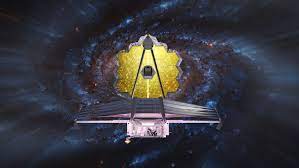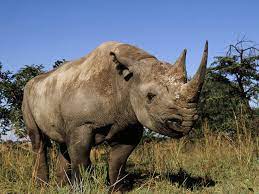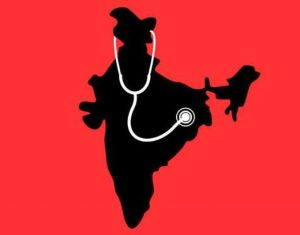Today Current Affairs: 25th August 2022 for UPSC IAS exams, State PSC exams, SSC CGL, State SSC, RRB, Railways, Banking Exam & IBPS, etc
Table of Contents
Central Bank Digital Currency (CBDC):

Reserve Bank of India’s (RBI) digital rupee — the Central Bank Digital Currency (CBDC) — may be introduced in phases beginning with wholesale businesses in the current financial year.
- RBI had proposed amendments to the Reserve Bank of India Act, 1934, which would enable it to launch a CBDC.
- Central Bank Digital Currency (CBDC) are a digital form of a paper currency and unlike cryptocurrencies that operate in a regulatory vacuum, these are legal tenders issued and backed by a central bank.
- It is the same as a fiat currency and is exchangeable one-to-one with the fiat currency.
- A fiat currency is a national currency that is not pegged to the price of a commodity such as gold or silver.
- The digital fiat currency or CBDC can be transacted using wallets backed by blockchain.
- Though the concept of CBDCs was directly inspired by Bitcoin, it is different from decentralised virtual currencies and crypto assets, which are not issued by the state and lack the ‘legal tender’ status.
- The main objective is to mitigate the risks and trim costs in handling physical currency, costs of phasing out soiled notes, transportation, insurance and logistics.
- It will also wean people away from cryptocurrencies as a means for money transfer.
- Bahamas has been the first economy to launch its nationwide CBDC — Sand Dollar.
- Nigeria is another country to have rolled out eNaira in 2020.
- China became the world’s first major economy to pilot a digital currency e-CNY in April 2020.
- Korea, Sweden, Jamaica, and Ukraine are some of the countries to have begun testing its digital currency and many more may soon follow.
BrahMos:

A Court of Inquiry (Col) of the Indian Air Force (IAF) into the accidental firing of a BrahMos supersonic cruise missile in March 2022, which landed in Pakistan, found that deviation from standard operating procedures (SOP) by three officers led to the incident. Services of the officers have been terminated with immediate effect, the IAF said.
- The missile landed 124 km inside Pakistan, following which the IAF ordered a CoI headed by an Air Vice-Marshal, a two-star officer, to investigate the incident.
- A day after the incident, the Pakistan military said the supersonic surface-to-surface missile flying at three times the speed of sound at 40,000 feet ended up 124 km inside Pakistan, damaging some civilian property.
- BrahMos is a joint venture between the Defence Research and Development Organisation (DRDO) and Russia-based NPO Mashinostroyeniya and the missile derives its name from the Brahmaputra and Moskva rivers.
Swachh Bharat Mission Grameen:

Over 1 lakh villages declared themselves as ODF (Open Defecation Free) Plus under Swachh Bharat Mission Grameen (SBM-G).
- These villages are sustaining their ODF status and have systems in place for managing solid and/or liquid waste and they would continue on their sanitation journey as they work towards making their villages cleaner, greener and healthier.
Swachh Bharat Mission Grameen (SBM-G):
- It was launched in 2014 by the Ministry of Jal Shakti to accelerate the efforts to achieve universal sanitation coverage and to put focus on sanitation.
- The mission was implemented as nation-wide campaign/Janandolan which aimed at eliminating open defecation in rural areas.
Swachh Bharat Mission (G) Phase-I:
- The rural sanitation coverage in the country at the time of launch of SBM (G) on 2nd October, 2014 was reported as 38.7%.
- More than 10 crore individual toilets have been constructed since the launch of the mission, as a result, rural areas in all the States have declared themselves ODF as on 2nd October, 2019.
SBM(G) Phase-II:
- It emphasizes the sustainability of achievements under phase I and to provide adequate facilities for Solid/Liquid & plastic Waste Management (SLWM) in rural India.
- It will be implemented from 2020-21 to 2024-25 in a mission mode with a total outlay of Rs. 1,40,881 crores.
- The SLWM component of ODF Plus will be monitored on the basis of output-outcome indicators for 4 key areas:
- Plastic waste management,
- Biodegradable solid waste management (including animal waste management),
- Greywater (Household Wastewater) management
- Fecal sludge management.
Top Performing States:
- The top five performing states are Telangana, Tamil Nadu, Odisha, Uttar Pradesh and Himachal Pradesh where maximum number of villages have been declared as ODF Plus.
India’s First Commercial SSA Observatory:

India’s first commercial Space Situational Awareness (SSA) Observatory will be set up in the Garhwal region of Uttarakhand.
- The observatory will be set up by Digantara, a Bengaluru-based space sector start-up.
- The observatory will be the first-of-its-kind in the region, set up to augment the start-up’s SSA capabilities.
- It will be strategically positioned to serve global space traffic management operations.
- It will assist in tracking any activity in space including that of space debris and military satellites hovering over the region.
- At present, the US is a dominant player in monitoring space debris.
- The observatory will bring value to the nation by serving as an essential data source for advancing knowledge of the realm of space.
- It will be able to supplement its space-based sensors in their mission to monitor satellites and debris in orbits ranging from Low Earth Orbit (LEO) to Geosynchronous Earth Orbit (GEO).
James Webb Space Telescope:

The James Webb Space Telescope, NASA’s latest and most powerful telescope, has captured new images of our solar system’s largest planet, Jupiter, presenting it in a never before seen light.
- The photographs published have captured a new view of the planet, presenting in detail its massive storms, colourful auroras, faint rings and two small moons — Amalthea and Adrastea.
- Jupiter’s famous Great Red Spot, a storm so big that it could swallow Earth, appeared bright white in the image, since it was reflecting a lot of sunlight, the space agency stated.
- NASA’s $10 billion James Webb Telescope was developed with the assistance of the European Space Agency and the Canadian Space Agency.
- It was launched to space on December 25, 2021 and is currently observing from Lagrange point 2, approximately 1.5 million km beyond Earth’s orbit around the Sun. The telescope released its first image on July 11 2022.
African Rhinoceros:

A report has stated that Rhino poaching rates in Africa declined to 2.3% in 2021 from 3.9% in 2018.
- At least 2,707 rhinos were poached in Africa between 2018 and 2021, including critically endangered black rhino and near threatened white rhino.
- The report was compiled by the International Union for Conservation of Nature (IUCN), Species Survival Commission (SSC), African and Asian Rhino Specialist Group (AfRSG) and TRAFFIC.
- African Rhino Specialist Group (AfRSG) gathered information from thirteen rhino range countries:
- Botswana, Chad, Eswatini, Kenya, Malawi, Mozambique, Namibia, Rwanda, South Africa, Tanzania, Uganda, Zambia and Zimbabwe.
Findings of the Report:
- Rhinoceros poaching rates in Africa have declined from a peak of 5.3% of the total population in 2015 to 2.3% in 2021.
- South Africa accounted for 90% of all reported cases, predominantly affecting white rhinos in Kruger National Park.
- South Africa lost 394 rhinos to poaching in 2020, while Kenya didn’t record any poaching that year.
- The total estimate of rhinos in Africa was 22,137 at the end of 2021.
- There has been an increase in poaching in private properties.
- A total of 451 rhinos were poached in South Africa in 2021: 327 within government reserves and 124 on private properties.
- The number of white rhinos in the continent declined by almost 11.8% during 2015-18, while populations of black rhinos increased by just over 12.2%.
- Zimbabwe conserves the largest population of African Rhinoceroses among the four range countries in Africa namely South Africa, Namibia, Kenya and Zimbabwe.
Vertical Launch Short Range Surface-to-Air Missile (VL-SRSAM):

The Defence Research and Development Organisation (DRDO) and the Indian Navy successfully flight-tested the indigenously developed Vertical Launch Short Range Surface-to-Air Missile (VL-SRSAM) from the Integrated Test Range (ITR) at Chandipur off the coast of Odisha.
- The VL-SRSAM, a ship-borne weapon system, is meant for neutralising various aerial threats at close ranges, including sea-skimming targets, and was last test-fired in June.
- The flight test was carried out from an Indian naval ship against a high-speed unmanned aerial target for demonstration of vertical launch capability.
- The missiles, equipped with indigenous Radio Frequency (RF) seeker, intercepted the target with high accuracy.
- During the test launch, flight path and vehicle performance parameters were monitored using flight data captured by various range instruments, the statement said.
Benami Law:

The Supreme Court declared as “unconstitutional and manifestly arbitrary” the amendments introduced to the Benami law in 2016, which apply retrospectively and can send a person to prison for three years even as it empowers the Centre to confiscate “any property” subject to a benami transaction.
- In a decision much awaited by businesses, a three-judge Bench, led by Chief Justice of India N.V. Ramana, declared as unconstitutional Sections 3(2) and 5 introduced through the Benami Transactions (Prohibition) Amendment Act, 2016.
- The 2016 law amended the original Benami Act of 1988, expanding it to 72 Sections from a mere nine.
- Section 3(2) mandates three years of imprisonment for those who had entered into benami transactions between September 5, 1988 and October 25, 2016.
- That is, a person can be sent behind bars for a benami transaction entered into 28 years before the Section even came into existence.
- Justice Ramana, who wrote the 96-page judgment, held that the provision violated Article 20(1) of the Constitution.
- Article 20(1) mandates that no person should be convicted of an offence, which was not in force “at the time of the commission of the act charged as an offence”.
- Section 5 of the 2016 Amendment Act said that “any property, which is subject matter of benami transaction, shall be liable to be confiscated by the Central Government”.
- The court held that this provision cannot be applied retrospectively.
Healthcare In India- Transforming Through Innovation : NASSCOM

A report by NASSCOM “Healthcare in India- Transforming Through Innovation” highlights how emerging technologies and innovations are transforming Health.
Status of India’s Health Sector:
- Increase in healthcare expenditure by a massive 73% ( from 2.73 lakh cr in 2019-20 to 4.72 lakh cr in 2021-22)
- New missions: e-sanjeevani, Ayushman Bharat Digital Mission, National Digital Health Mission etc.
- Over 2000 HealthTech Start-ups (including 4 unicorns)
NAFIS:

National Automated Fingerprint Identification System (NAFIS) has been launched by the Home Ministry to allow a country-wide search of crime-related fingerprints.
- NAFIS will create a unique 10-digit national fingerprint number (NFN) for each person arrested for the crime.
- Using the database of fingerprints, different crimes can be linked to NFN.
- It will “provide the much-needed unique identifier for every arrested person in the CCTNS (Crime and Criminal Tracking Network & Systems)
- Developed by National Crime Records Bureau (NCRB)
- Already implemented in Madhya Pradesh (to identify deceased persons)




